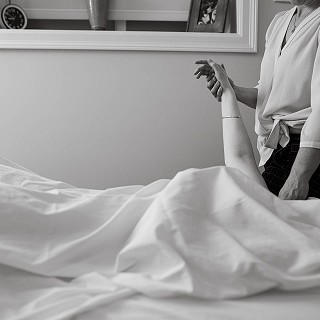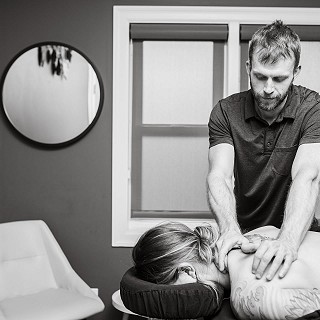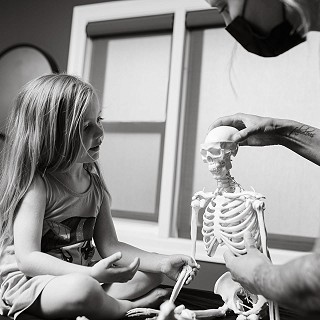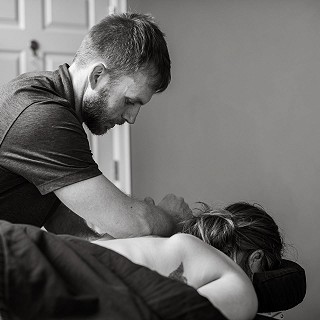Safe Gardening Posture
Keeping good posture, is keeping your back straight! It is a quick and easy way to lessen stress on your tendons and joints.
Injuries are prevented by reducing extra stress and strain on the body and by keeping good posture decreases muscle pain and fatigue. Maintaining a straight back is easier if you use long-handled tools and handle extenders, such as hoes, rakes, and brooms. Your long-handled tools should be as tall as, or taller, than you, allowing you to stand straight up. Working with a straight back helps the nerves and muscles in your back from over stretching and stressing your spine. Try grasping the handle with both hands, with your thumbs up, and bending with your knees to move the tool sideways. Remember to bend your knees, not your back.
It also helps to carry boxes and bags from the bottom, not by their tops or handles. Lift the object by holding its bottom and straighten your knees while in the bent position. This keeps your back straight when you stand up.
When working close to the ground, as when you are weeding, kneel with one knee, not both. Kneeling on both knees can cause you to round your back. It’s easier to keep your back straight by kneeling only on one knee. Whether you garden while sitting or kneeling, bend forward from your hips and not your mid back, this should help keep your back aligned and your back from rounding.
Tools with built-up cushioned grips, or grip handles that clamp onto a standard tool, make handles larger and easier to hold, easing the impact that work has on your hands and wrists. These tools allow you to work with less strain, stress and pain. Cushioned grips and grip handles prevent wrists from bending forward or being pushed toward one side, and are helpful in avoiding repetitive strain injuries like Carpal Tunnel Syndrome. You can also adapt long handled tools to work for you in a sitting position. Place a triangular block of 4” x 4” x 1” lumber on the ground with the tool propped over it. The wood supports the weight of the tool so your energy is used to move the tool. Your energy is not wasted in holding, directing, or lifting the tool. Since the wood supports the weight of the tool, there is less stress on your wrists, upper arms, and shoulders.
Black Bean Brownies
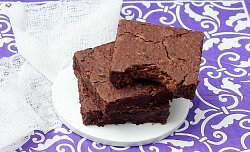
Ingredients
- 1 1/2 cups black beans (1 15-oz can, drained and rinsed very well) (250g after draining)
- 2 tbsp cocoa powder- dutch or regular (10g) (add a little extra if desired)
- 1/2 cup quick oats (40g)
- 1/4 tsp salt
- 1/3 cup pure maple syrup or agave (Honey will work, but not for strict vegans.)
- 2 stevia packs or 2 tbsp sugar (or omit and increase maple syrup to 1/2 cup)
- 1/4 cup coconut or vegetable oil
- 2 tsp pure vanilla extract
- 1/2 tsp baking powder
- 1/2 cup to 2/3 cup chocolate chips (115-140g) (Not optional. Omit at your own risk.)
- optional: more chips, for presentation
Instructions
- Preheat oven to 350 F.
- Combine all ingredients except chips in a good food processor, and blend until completely smooth.
- Really blend well. (A blender can work if you absolutely must, but the texture—and even the taste—will be much better in a food processor.)
- Stir in the chips, then pour into a greased 8×8 pan.
Optional: sprinkle extra chocolate chips over the top. Cook the black bean brownies 15-18 minutes, then let cool at least 10 minutes before trying to cut.
Serves: 9-12 brownies
Psoas Stretch
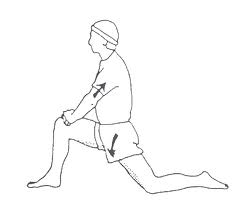
- Kneel on one knee, placing one leg about two feet in front of the other one, in a position that it forms a 90-degree angle.
- Lean slightly forward, trying to maintain your back straight without curving.
- You can keep your arms in your hips, but it would focus much better on psoas if arms are moved over your head.
- You should feel the stretch at that point; hold it, relax and repeat the movement with the other leg.

